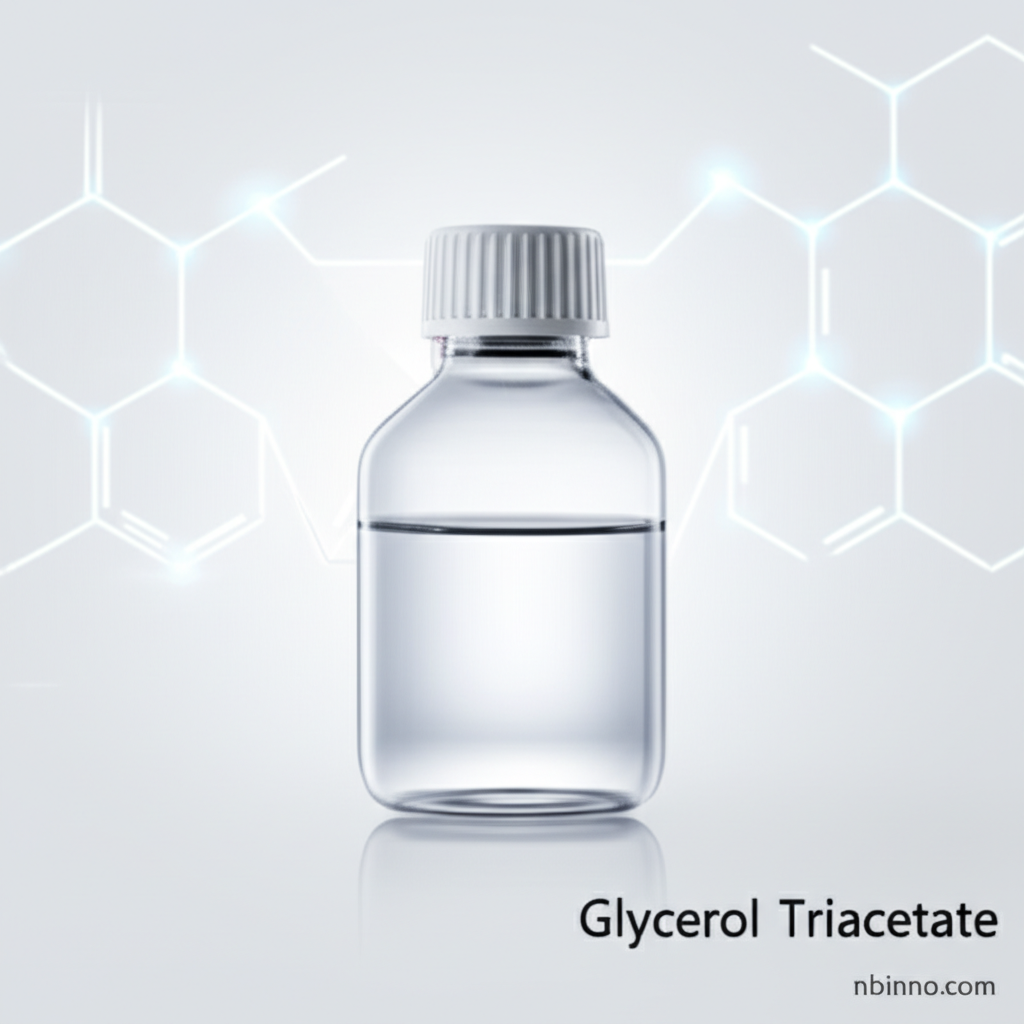Glycerol Triacetate: Your Guide to Triacetin Applications, Benefits, and Sourcing
Discover the unparalleled versatility of Glycerol Triacetate (Triacetin). This comprehensive guide explores its multifaceted applications as a plasticizer, solvent, humectant, and fixative, highlighting its crucial role in industries from food and cosmetics to pharmaceuticals and advanced manufacturing. Understand its properties, benefits, and why it's a go-to chemical solution.
Get a Quote & SampleProduct Core Value

Glycerol Triacetate
Glycerol Triacetate, commonly known as Triacetin, is a remarkable chemical compound with the CAS number 102-76-1. It is synthesized from glycerol and acetic acid, resulting in a colorless, oily liquid that is virtually odorless. Its unique properties make it an indispensable ingredient for numerous industries, offering solutions as a plasticizer, solvent, humectant, and fixative. We are a trusted supplier in China, providing high-quality Triacetin that meets stringent industry standards.
- Explore the diverse applications of Triacetin, including its role as a plasticizer in polymers and its use as a solvent for flavors and fragrances. We are dedicated to providing high-quality chemical solutions for your manufacturing needs.
- Understand the benefits of Triacetin as a humectant and fixative, contributing to product stability and longevity. As a reliable manufacturer in China, we ensure consistent product quality.
- Learn about the safety and regulatory compliance of Triacetin, especially its approval as a food additive, making it a safe choice for the food industry.
- Discover how Glycerol Triacetate enhances product performance, from improving flexibility in plastics to extending the shelf life of food products.
Advantages of Triacetin
Exceptional Versatility
Triacetin's capacity to function as a plasticizer, solvent, humectant, and fixative across food, cosmetics, pharmaceuticals, and industrial applications makes it an exceptionally versatile chemical compound.
Enhanced Product Performance
By improving flexibility, moisture retention, and texture, Triacetin significantly enhances the performance and appeal of a wide range of products, from consumer goods to industrial materials.
Proven Safety and Compliance
With a generally recognized as safe (GRAS) status for food use and excellent safety profiles in cosmetics and pharmaceuticals, Triacetin offers peace of mind for formulators and consumers alike.
Key Applications
Food & Beverage Industry
Used as a food additive (E1518), Triacetin functions as a humectant, stabilizer, and flavor carrier, enhancing the quality and shelf-life of products like chewing gum, baked goods, and beverages.
Cosmetic & Personal Care
In cosmetics, it acts as a solvent and fixative for fragrances, an emollient, and a plasticizer, improving the texture and sensory properties of lotions, perfumes, and makeup.
Pharmaceuticals
Triacetin serves as a crucial excipient, acting as a plasticizer in capsule coatings and a solvent for active ingredients, supporting drug delivery and stability.
Industrial Manufacturing
Its plasticizing capabilities are utilized in cellulosic resins, inks, coatings, and adhesives, providing flexibility and durability to various manufactured goods.
